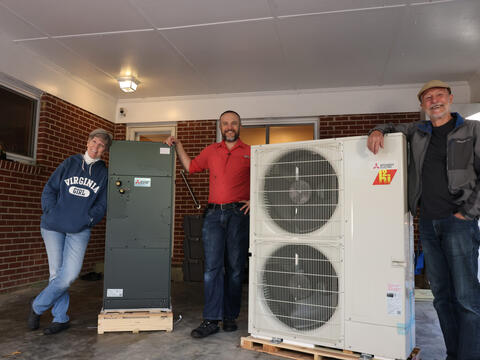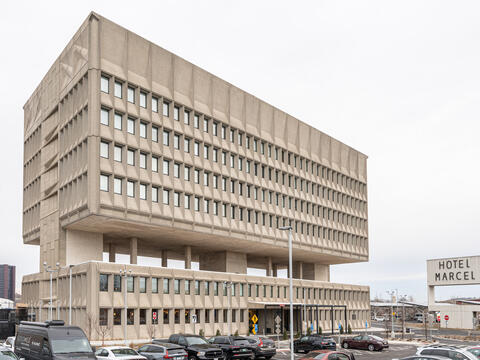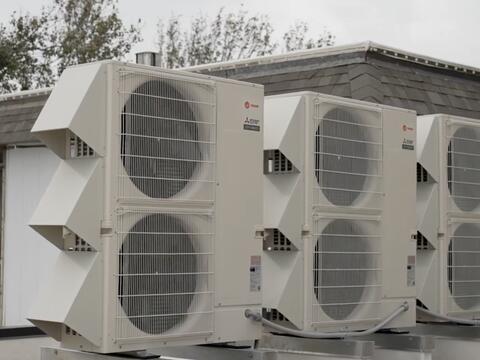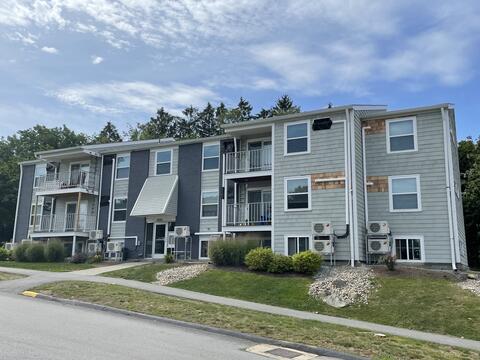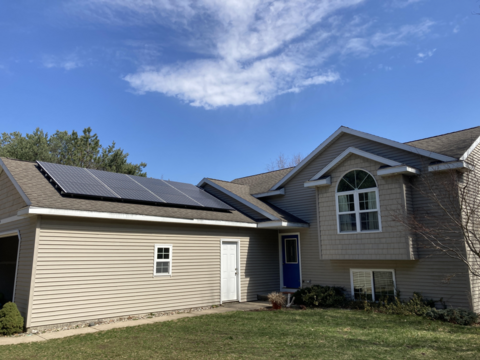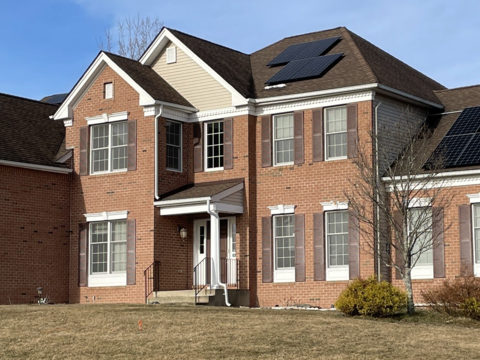Fairway Independent Mortgage
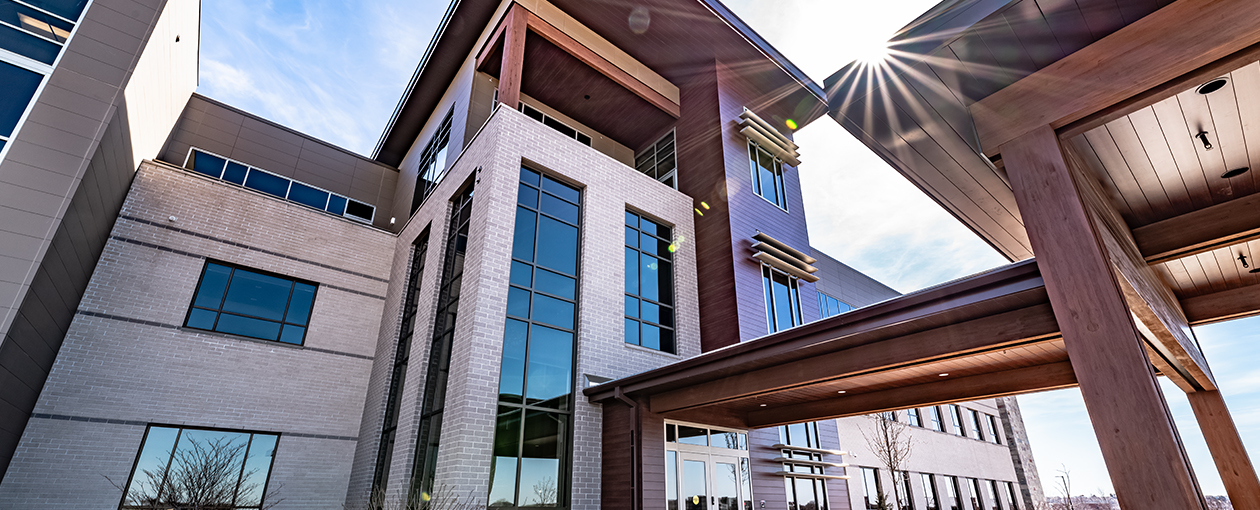
Project Location: Madison, Wisconsin
Completion Date: November 2017
CHALLENGE
Selecting an energy-efficient HVAC system to provide distributed comfort and zoning to a large office buildingSOLUTION
Geothermal Water-Source VRF from Mitsubishi ElectricRESULT
An energy-efficient HVAC system that provides year-round comfort to the office’s occupants
Fairway Independent Mortgage Corporation (Fairway Mortgage) is a national mortgage lender that has helped thousands make home ownership a reality since its founding in April 1996. Headquartered in Madison, Wisconsin, Fairway Mortgage has experienced exponential growth in recent years and in 2015 was at facility capacity. Working out of multiple office buildings around town, leadership decided it was time for a brand-new headquarters, one that could grow with the company and promote sustainable, energy-efficient operation.
Having previously worked with Excel Engineering (Excel), a full-service architectural and engineering firm, Fairway asked Excel to review its schematic building plans. After an initial analysis of Fairway Mortgage’s development goals, Excel opted to design the HVAC system in unison with the architectural spaces and elements, rather than force the HVAC system into an already designed space. This collaboration would result in an efficient building that maximizes mechanical system performance without compromising architectural design intent.
The HVAC system of choice for the project: Mitsubishi Electric CITY MULTI® Water-Source Variable Refrigerant Flow (VRF) systems.
BENEFITS OF GEOTHERMAL VRF
“Fairway Mortgage was interested in exploring green building strategies from the start,” said Jonathan Brinkley, architect, Excel. “With their growth rate, expansion is always on the horizon. They needed a building with systems that could operate efficiently now, and still be added on to in the future.”
While a Variable Air Volume (VAV) system was originally specified for the 96,000-square-foot, three-story office building, Excel had a different idea.
“When Fairway Mortgage came to us with their requests for green efficiency and a return on investment, we convinced them to do a test well on the property to see if it was a good fit for a geothermal system,” said Brinkley. “As it turns out, it was very good.”
With the schematic building design Excel initially reviewed and critiqued, several architectural problems arose that impacted both usable space and air flow in the building. “If we used a rooftop VAV system, the shafts required to move the high volumes of air throughout the building were so large that they were restricting the owner’s desired use of the space. That was one of the main drivers to switch to geothermal VRF,” said Brinkley.
“On the interior of the building, VRF was ideal because the ventilation shafts are minimal, the small horizontal duct work maximizes the available ceiling height and the VRF equipment is easily hidden above ceilings. On the exterior of the building, this VRF system requires no unsightly rooftop units and screening. Sometimes, rooftop HVAC units are the size of shipping containers. Advising as an architect in charge of the entire holistic building design, I always tell new clients that if we can do a geothermal VRF system we get all those design benefits plus energy-efficiency,” explained Brinkley.
A HISTORY OF SAVINGS
Another reason Fairway selected VRF technology: Excel used Mitsubishi Electric CITY MULTI in its own office building. “While we didn’t do formal energy modeling, we were able to quantify what our savings were based on our building’s history with geothermal VRF,” said Ray Del Ponte, PE, principal, Excel. “From monitoring energy data of our office’s current VRF system with our previous HVAC system, we estimated that a geothermal water-source VRF system would save Fairway Mortgage $0.50– $0.75 per square foot in annual utility costs compared to a traditional hot water VAV rooftop system.”
Ultimately, Horizontal-Ducted Indoor Units were installed throughout the building with a few Wall-Mounted Indoor Units placed in administrative and maintenance areas. For outside air, three third-party Dedicated Outdoor Air Systems were installed on the roof, with each consisting of a cooling/ heating coil served by a dedicated, WY-Series water-source VRF unit. WR2- Series water-source units are located in three, small rooftop penthouses spread evenly across the building for centralized maintenance and space savings.
On top of the cost savings a traditional geothermal system typically offers, the team added variable water flow valves for each of the condensing units. Modulating water flow on a traditional geothermal system isn’t normally done in this regional market due to the low water-temperature in cold climates. However, Mitsubishi Electric’s water-source VRF system is able to effectively handle cold water temperatures and incorporate variable condenser flow which allows for even more energy savings.
SIMPLIFIED APPLICATION AND USE IN THE MARKET
“We used the Diamond System Builder™ software and worked with the product representative when sizing the VRF system,” said Julie Gorham, designer II, Excel. “The program was very helpful in my design. It allowed me to easily make modifications when changes were made to the project. Overall, it helped me save a lot of time in my design work.”
With more new construction offices attaining green building certifications or even looking to improve their social responsibility with sustainability, the project team has noticed an increased demand for VRF within the market. “We’ve specified Mitsubishi Electric VRF systems for most of the VRF projects we’ve designed for,” explained Del Ponte. “Whenever it’s appropriate, we specify VRF.”
“At first glance, I think many traditional office buildings or even high-performing office buildings would have done VAV (whether rooftop or indoor) for this project. The big thing driving people to switch to VRF is that they’re getting either the same or better zoning than a VAV system and the added energy efficiency, especially with a heat-recovery system,” noted Matthew Blocker, regional commercial sales and product manager, Mitsubishi Electric Trane HVAC US (METUS).
“I see a lot more projects in my markets going with water-source VRF because you are recovering energy across the entire building. Especially for high-end offices that are trying for high-performance markers like net zero, there’s really nothing out there that can beat geothermal water-source VRF with solar panels from an efficiency standpoint,” said Blocker.
OPTIMIZED COMFORT AND CONTROLS
Energy recovery also makes for a comfortable atmosphere, particularly in Wisconsin where the winters can get chilly. “In our past offices, everyone was used to using a space heater in every cubicle,” said Arick Fry, facilities manager, Fairway Mortgage. “With the way the water-source units are set up on the top floor, they form an outer ring around the entirety of the building. When the skeleton of the building is warm it helps everything else run easier and keep comfortable. The employees here are very happy with the new system.”
Fry and his team are also able to keep the building temperature regulated using Mitsubishi Electric’s Diamond Controls™ building management system. “That interface has really been a savior. The graphics are really nice; it shows us the real-time temperature throughout the building and in each zone. Different colors tell you which areas are comfortable or uncomfortable and what needs to be adjusted,” said Fry. “Another helpful feature is that you can set increments for data to be recorded. For example, I can track the temperature of each zone over the last 12 hours or see how the temperatures dipped overnight. The program even alerts you when it’s time to change the filters on each indoor unit.”
With its new headquarters already halfway occupied, Fairway Mortgage has continued to expand the building since opening its doors in November 2017.
Additional geothermal wells were drilled around the building to accommodate future development and management has added photovoltaic panels to further offset energy costs for the building. While Fairway’s HVAC system is running efficiently, Fry notes that Mitsubishi Electric is also efficient in customer service and support.
“Throughout the process, our rep, Matt Blocker has been so helpful with every question we’ve had,” said Fry. “I know he travels quite a bit but each time we contact him there’s always a quick response. We know that he (and by extension Mitsubishi Electric) is here to help us.”
Project Team
- Architect/Engineer: Excel Engineering, Inc., Fond du Lac, Wisconsin
- Distributor/HVAC Consultant: Access Engineering, LLC, Neenah, Wisconsin
Mitsubishi Electric Equipment Installed
- (12) PQRY WR2-Series Water-Source VRF Heat Recovery Units
- (3) PQHY WY-Series Water-Source VRF Heat Pump Units
- (106) PEFY Horizontal-Ducted Indoor Units
- (6) PKFY Wall-Mounted Indoor Units
- (1) Diamond Controls™ Solutions
- (1) AE-200A Centralized Controller
- (2) AE-50A Centralized Controllers


